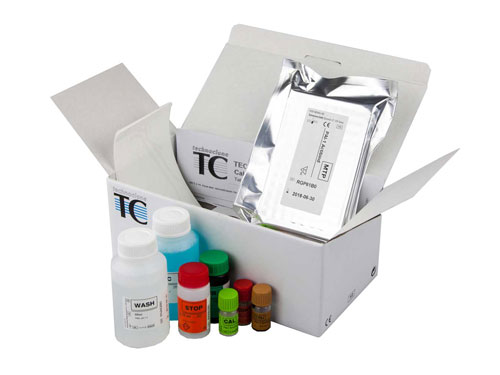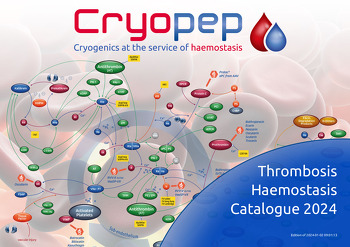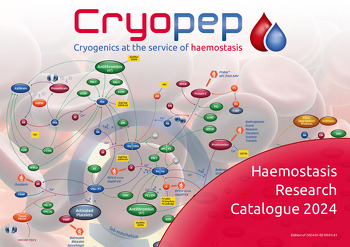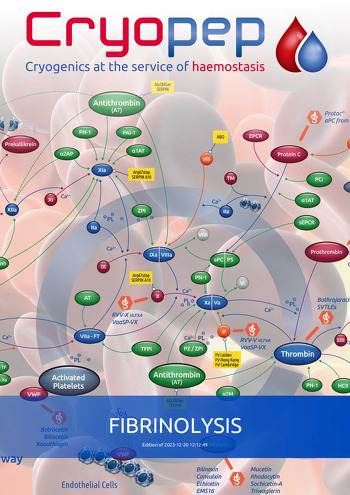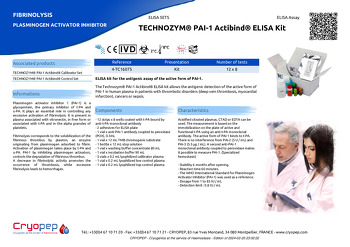Plasminogen activator inhibitor 1 (PAI-1) is a glycoprotein, the primary inhibitor of t-PA and u-PA. It plays an essential role in controlling any excessive activation of fibrinolysis. It is present in plasma associated with vitronectin, in free form or associated with t-PA and in the alpha granules of platelets.
Fibrinolysis corresponds to the solubilization of the fibrinous thrombus by plasmin, an enzyme originating from plasminogen adsorbed to fibrin. Activation of plasminogen takes place by t-PA and u-PA. PAI-1 by inhibiting plasminogen activators, controls the degradation of fibrinous thrombus.
A decrease in fibrinolytic activity promotes the occurrence of thrombosis, while excessive fibrinolysis leads to hemorrhages.
Acidified citrated plasmas, CTAD or EDTA can be used. The measurement is based on the immobilization on the plate of active and functional t-PA using an anti-t-PA monoclonal antibody. The active form of PAI-1 binds to t-PA. There is no interference from PAI-2 (5 U / mL) and PAI-3 (5.5 µg / mL). A second anti-PAI-1 monoclonal antibody coupled to peroxidase makes it possible to measure PAI-1. (Specialized hemostasis)
- Stability 6 months after opening.
- Reaction time 60 minutes.
- The WHO International Standard for Plasminogen Activator Inhibitor (PAI-1) was used as a reference.
- Dosage from 1 to 85 IU / mL
- Detection limit : 0.8 IU / mL
- 12 strips x 8 wells coated with t-PA bound by anti-t-PA monoclonal antibody
- 2 adhesives for ELISA plate
- 1 vial x anti-PAI-1 antibody coupled to peoxidase (POX), 0.3mL
- 1 vial x 12 mL TMB chromogenic substrate
- 1 bottle x 12 mL stop solution
- 1 vial x washing buffer concentrate 80 mL
- 1 vial x incubation buffer 90 mL
- 5 vials x 0.2 mL lyophilized calibrator plasma
- 1 vial x 0.2 mL lyophilized low control plasma
- 1 vial x 0.2 mL lyophilized top control plasma







